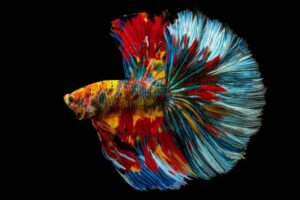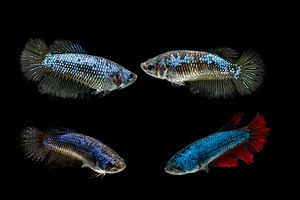While bettas (Betta splendens) have a reputation for being mean, it’s possible to keep a male betta fish with appropriate tank mates. Male bettas cannot be kept with others of their kind, but other fish species cohabitate well with them. What can be kept with bettas? We’ll talk about the 7 best tank mates to pair with male betta fish now. Here’s a preview!
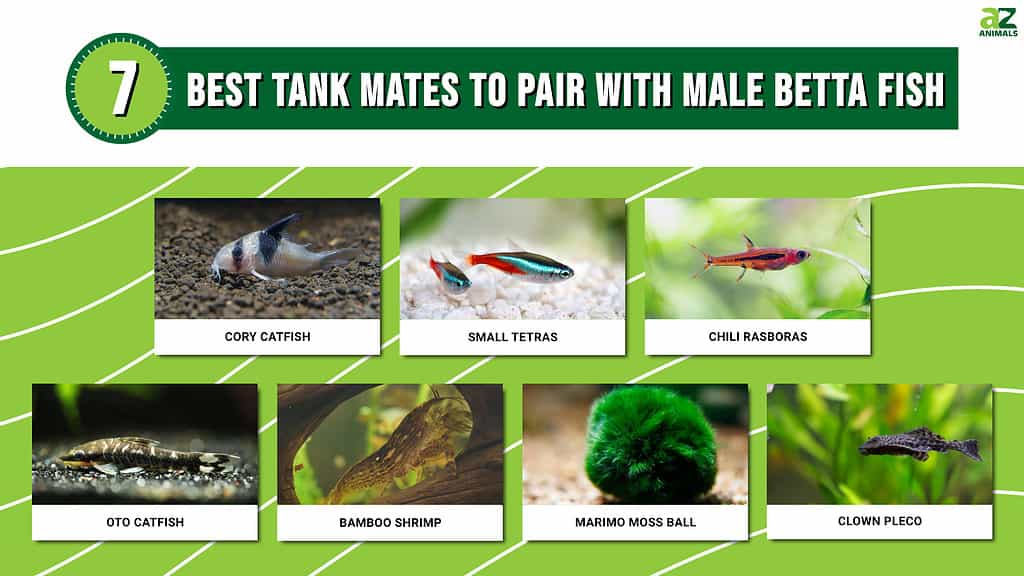
Things to Remember When Picking Companion Fish for Bettas
There are a few key things to remember when picking out tank mates for bettas. Bettas do not do well in small bowls despite their popularity.
Betta fish need a minimum of 5 gallons to live comfortably, but more space is needed if tank mates are in the mix. This is because they are more antagonistic in confined environments. It is also important to remember that other fish require more space than bettas.
Bettas need soft hiding spots like silk or live plants if they’re going to share their space with other fish. Since bettas are tropical fish, a heating element that maintains the water between 75 and 80 degrees Fahrenheit is necessary.
1. Betta Tank Mate: Cory Catfish (Corydoras spp.)
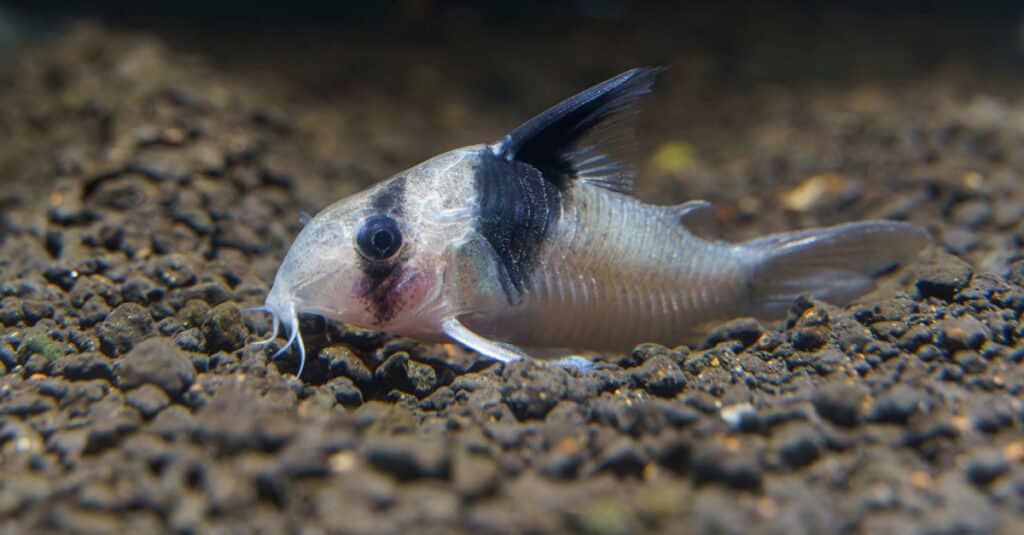
Panda
cory cats are a great choice for a betta tank.
©chonlasub woravichan/Shutterstock.com
Corydoras catfish are easy to take care of and they live for up to 3 years. They aren’t aggressive and won’t pay much attention to the betta fish in your tank. They’re lively, so if you’re looking for more movement in your setup, cories are a good bet.
A cory’s most valuable job in any tank is its ability to clean the substrate. They do best in groups of 5 or more individuals.
You’ll do best with a smaller species like the panda cories (Corydoras panda). However, if you have the tank space for larger varieties, they’re also peaceful enough to cohabitate with a betta fish.
2. Betta Tank Pairing: Small Tetras
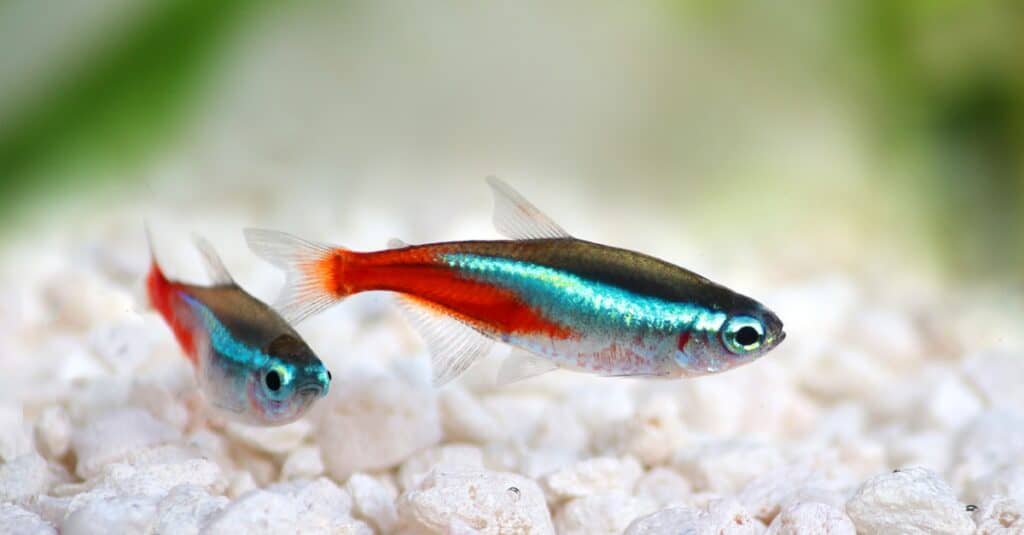
Neon tetras are schooling fish that make decent betta fish tank mates.
©iStock.com/Mirko_Rosenau
Some smaller tetra species are appropriate tank mates for male bettas. The species we recommend are neon tetras (Paracheirodon innesi), and ember tetras (Hyphessobrycon amandae).
Tetras like flake food and pellets with bloodworms or brine shrimp as treats once in a while. They are happy eating the same foods that your betta eats as long as their diet is varied.
Tetras are schooling fish so they need a small group of about 6 individuals to be comfortable. Since each species has different swimming habits, picking out one species of tetra is advisable. This keeps your tetras as comfortable and healthy as possible.
Not all tetras are created equal, however. Keep in mind that only some species are appropriate for a betta setup. Inappropriate species include serpae tetras (Hyphessobrycon eques), black skirt tetras (Gymnocorymbus ternetzi), and silvertip tetras (Hasemania nana). These tetras are more aggressive and may eat the delicate fins of a slow-moving betta.
3. Betta Tank Mate: Chili Rasboras (Boraras brigittae)

Chili rasboras are tiny which makes them one of the few fish appropriate for a 5-gallon tank.
©boban_nz/Shutterstock.com
Chili rasboras are another schooling fish that work well with male bettas. They need to be kept in groups of 6 or more individuals for peak health. They’re tiny compared to the other fish on this list, so they’re a rare candidate for fish keepers who want to invest in a small 5-gallon setup.
They also eat the same diet as betta fish, so they don’t require an extra feeding regiment on top of what you’re already providing. They enjoy pellets or flakes along with supplemental bloodworms and brine shrimp.
4. Betta Tank Pairing: Oto Catfish (Otocinclus ssp.)
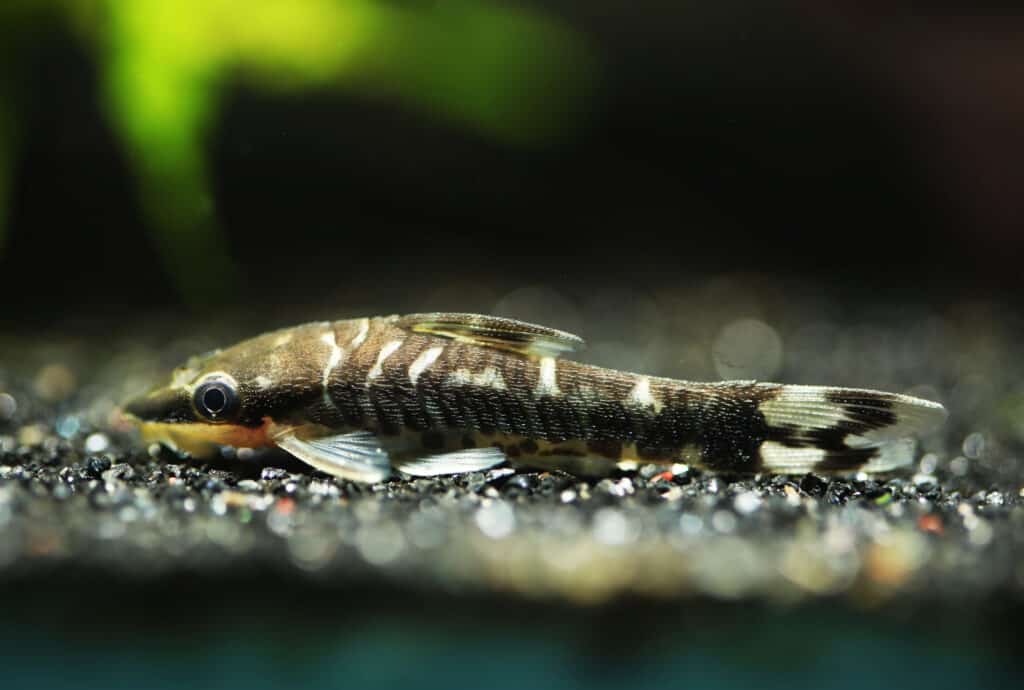
Oto catfish are algae-eating suckerfish that do well in betta tanks.
©Pavaphon Supanantananont/Shutterstock.com
Oto catfish are voracious algae-eating suckerfish. While they spend a lot of time at the bottom of a fish tank, they’ll frequently cruise around the glass walls which allows you to see their little mouths in motion.
These little cats should not be added to brand-new aquariums as there won’t be enough algae for them to eat. Even in established tanks, you will need to maintain a periodic feeding schedule that includes algae wafers and vegetables like zucchini. This is because they’ll eat all of the algae in the tank and still need more food than can naturally grow for them in their contained environment.
5. Betta Tank Mate: Bamboo Shrimp (Atyopsis Mollucensis)
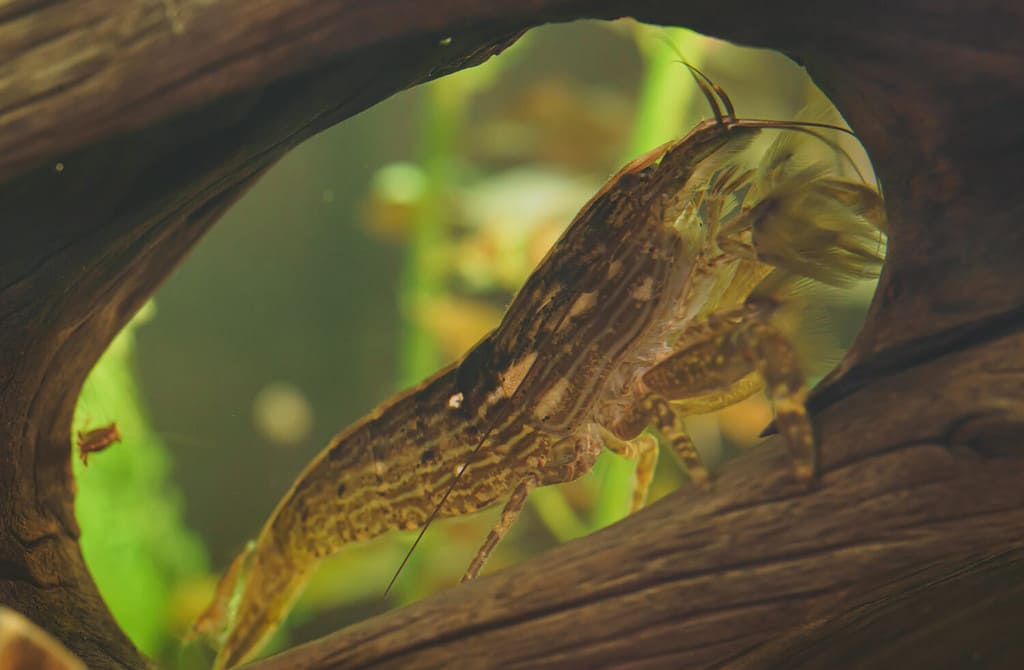
Bamboo shrimp are too big for a betta to eat so they make a great addition to their tank.
©M-Production/Shutterstock.com
Bamboo shrimp are great with bettas because they’re too big for the betta fish to eat. Smaller common aquarium shrimp, like cherry shrimp (Neocaridina davidi), make easy snacks so they aren’t appropriate in a betta tank. These shrimp do best in tanks with constant filtration so the water is always moving.
Bamboo shrimp rely on detritus in the water column. They do well munching on leftover betta food, however, do not overfeed your betta for the sake of the bamboo shrimp in your tank. Their ideal environment contains live plants because these plants allow for bits of vegetation to end up circulating through the water column for their consumption.
6. Betta Tank Pairing: Marimo Moss Ball (Aegagropila Linnaei)
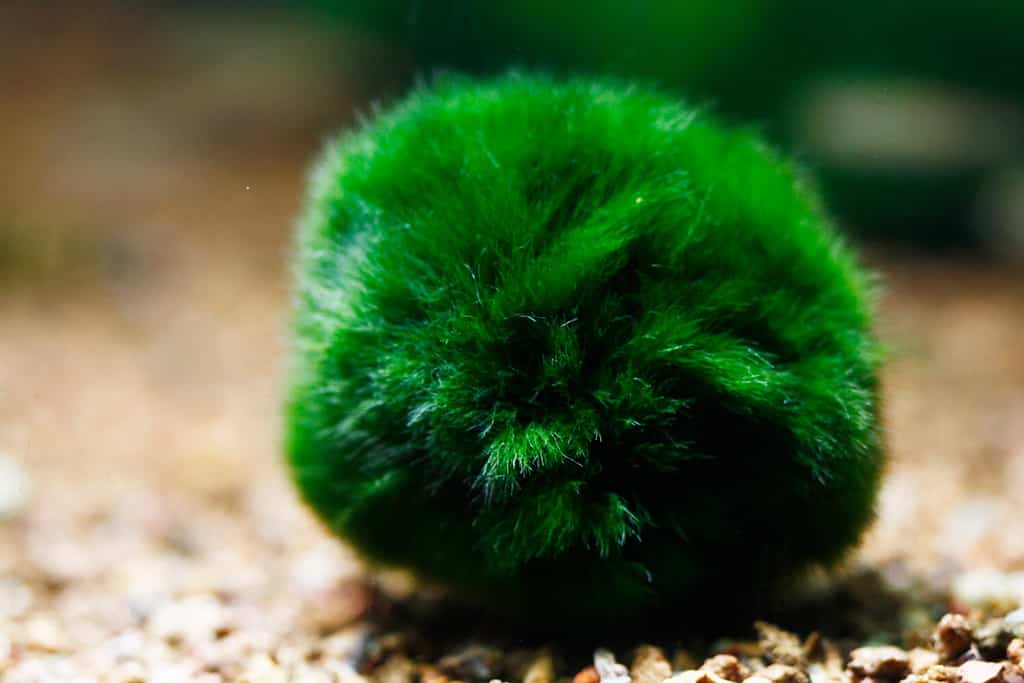
Marimo moss balls are soft which means they won’t rip up your betta’s fins.
©Pavaphon Supanantananont/Shutterstock.com
Marimo moss balls are not fish, however, they’re the perfect live plant for a beginner’s fish tank. They’re soft so they won’t snag a betta’s fins, and they’re almost impossible to kill. They don’t require any special food as they create all they need through photosynthesis.
They only grow a few millimeters per year, and they live up to a century. This means that they’ll remain an accessory in your tank for as long as you keep the tank up and running. If you ever decide to shut your tank down, they do well in jars.
7. Betta Tank Mate: Clown Pleco (Panaqolus maccus)
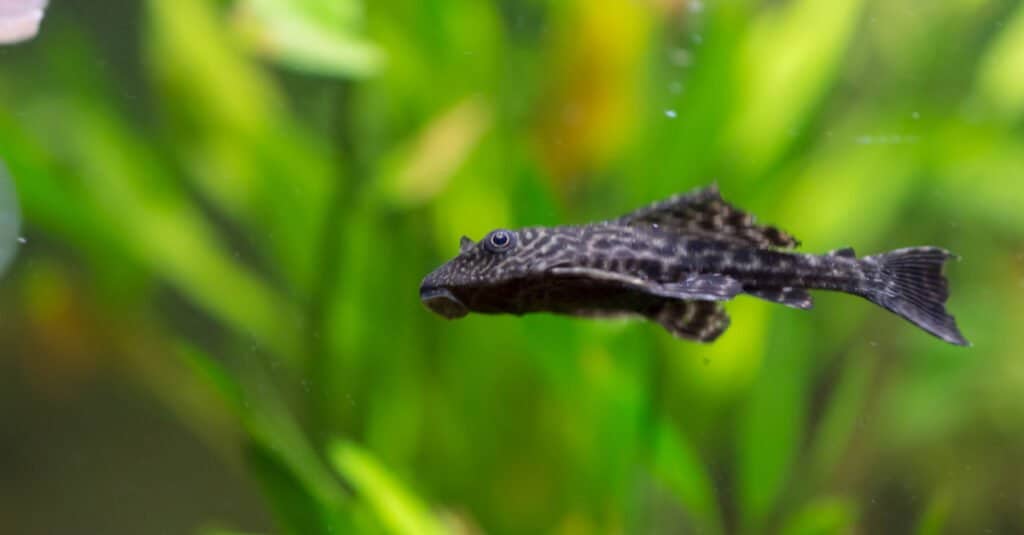
Clown plecos are passive fish that usually don’t attract a betta’s attention.
©iStock.com/MIKITO SHIRAI
Clown plecos are sometimes the victim of betta attacks, but their thick skin means that they almost always come out unscathed. They also are not easily provoked, so they stay passive despite the occasional aggression from a male betta. They’re not flashy, so the chances that your betta will obsess over a clown pleco is minimal.
Not all plecos are created equal! Make sure that the pleco you’re getting is a clown pleco, as some stores will sell you species that grow over 2 feet in length. This is a common mistake that beginners make, so do your due diligence. Aquarium store staff are often not educated on the differences between these types of fish.
| Betta Tank Mate Name | Scientific Name | Size of Adult | Minimum Tank Needed | Care Difficulty | Diet | Swimming Level |
|---|---|---|---|---|---|---|
| Cory Catfish | Corydoras spp. | 1 to 4 Inches | 10 Gallons | Easy | Omnivore | Bottom |
| Small Tetras | Paracheirodon innesi, Hyphessobrycon amandae | Up to 1.5 Inches | 10 Gallons | Easy | Omnivore | Middle |
| Chili Rasbora | Boraras brigittae | .75 Inches | 5 Gallons | Moderate | Omnivore | Middle |
| Oto Catfish | Otocinclus ssp. | Up to 2 Inches | 10 Gallons | Moderate | Herbivore | Bottom and Glass Sides |
| Bamboo Shrimp | Atyopsis Mollucensis | 2 Inches | 20 Gallons | Moderate | Detrivore | Bottom |
| Marimo Moss Ball | Aegagropila Linnaei | 2 to 12 Inches | No Minimum | Very Easy | None | Bottom |
| Clown Pleco | Panaqolus maccus | Up to 3.5 Inches | 20 Gallons | Easy | Herbivore | Bottom and Glass Sides |
The photo featured at the top of this post is © Shutterman70/Shutterstock.com
Thank you for reading! Have some feedback for us? Contact the AZ Animals editorial team.




